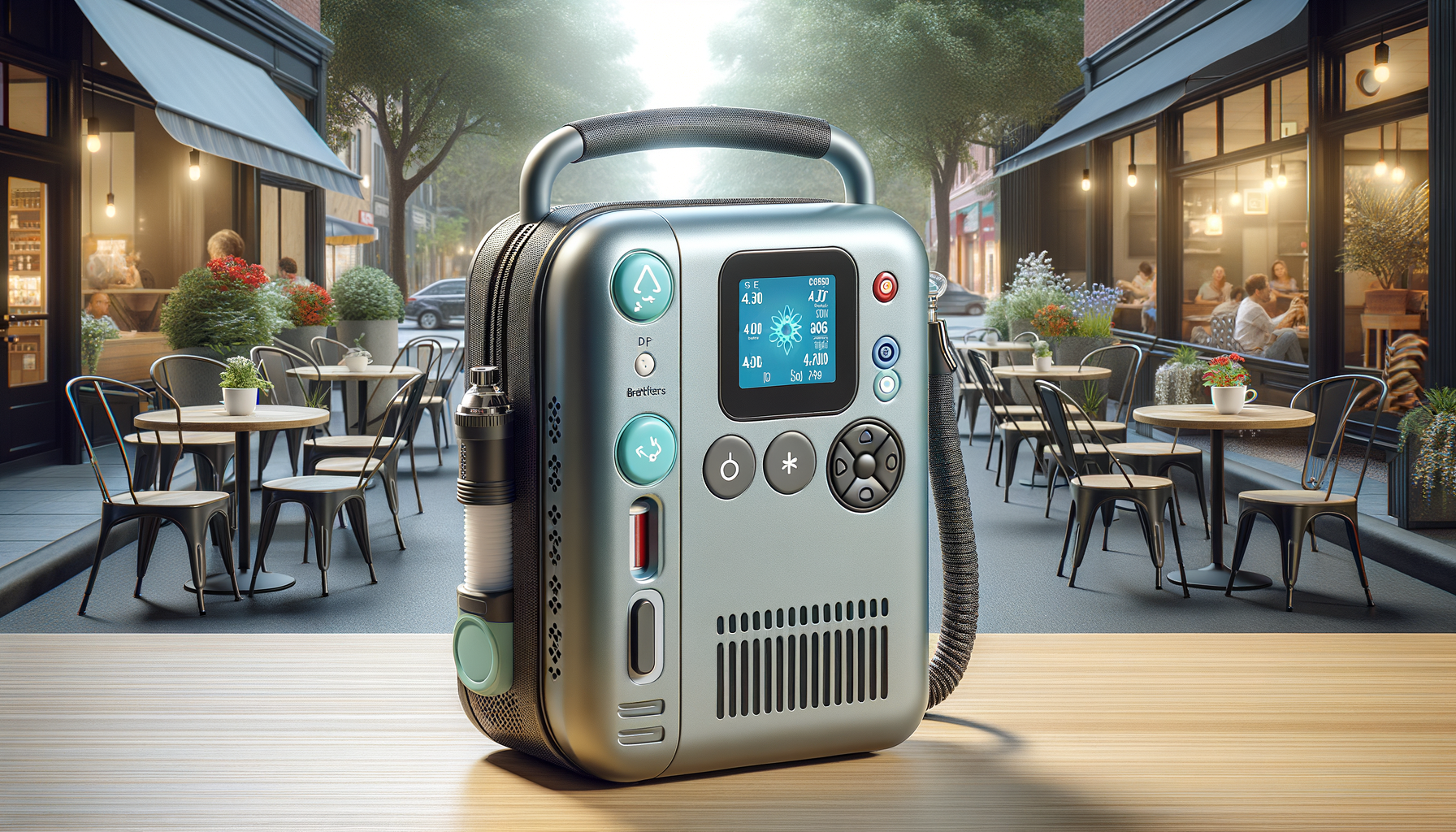
How Portable Oxygen Concentrators Assist Daily Mobility
The Role of Portable Oxygen Concentrators in Modern Healthcare
Portable oxygen concentrators (POCs) have become increasingly vital in modern healthcare, offering a lifeline to individuals with chronic respiratory conditions. These devices are designed to provide oxygen therapy to patients outside the traditional hospital setting, enhancing their quality of life by allowing greater freedom and mobility. As healthcare continues to evolve, POCs represent a significant advancement in the management of respiratory diseases, enabling patients to maintain their daily routines while receiving the necessary oxygen support.
Unlike traditional oxygen tanks, POCs are compact and lightweight, making them easy to carry and use in various environments. This portability is particularly beneficial for individuals who wish to travel or engage in outdoor activities without the constant worry of oxygen depletion. By delivering oxygen on demand, these devices ensure that patients receive adequate oxygen levels, tailored to their specific needs, which can vary throughout the day and with different activities.
Moreover, the technology behind POCs is continually improving, with newer models offering features such as longer battery life, quieter operation, and enhanced durability. These advancements contribute to the growing popularity of POCs, as they provide a practical and efficient solution for oxygen therapy that integrates seamlessly into everyday life.
Design and Functionality: What Makes POCs Stand Out
The design and functionality of portable oxygen concentrators are key factors that set them apart from traditional oxygen delivery systems. POCs are engineered to be user-friendly, with intuitive controls and displays that make them accessible to individuals of all ages. Their compact design allows for easy transportation, whether carried by hand, in a backpack, or attached to a mobility aid, ensuring that users can move freely without being hindered by cumbersome equipment.
Functionally, POCs work by drawing in ambient air, filtering out nitrogen, and delivering concentrated oxygen to the user. This process is efficient and effective, providing a continuous supply of oxygen that can be adjusted based on the user’s activity level. Many POCs come with multiple settings, allowing users to customize the flow rate to match their specific oxygen requirements, whether resting or engaging in physical activity.
Additionally, POCs are equipped with rechargeable batteries, offering hours of operation on a single charge. This feature is crucial for users who are on the go, as it eliminates the need for frequent recharges or the inconvenience of being tethered to a stationary power source. The combination of portability, ease of use, and reliable oxygen delivery makes POCs an attractive option for individuals seeking to maintain an active lifestyle while managing their respiratory health.
Benefits of Using Portable Oxygen Concentrators
The benefits of using portable oxygen concentrators extend beyond mere convenience, offering significant improvements in the quality of life for those with respiratory conditions. One of the primary advantages is the enhanced mobility that POCs provide. By allowing users to receive oxygen therapy on the go, POCs enable individuals to participate in social activities, travel, and maintain their independence, which can have a positive impact on mental and emotional well-being.
Another benefit is the potential for improved physical health. With consistent access to oxygen, users can engage in regular exercise and physical activities, which are essential for overall health and vitality. This continuous supply of oxygen helps to reduce symptoms such as shortness of breath and fatigue, allowing users to perform daily tasks with greater ease and efficiency.
Furthermore, POCs can contribute to better management of chronic respiratory conditions, reducing the frequency of hospital visits and medical interventions. By providing a reliable source of oxygen, these devices can help prevent complications and exacerbations, leading to improved health outcomes and reduced healthcare costs. The ability to monitor and adjust oxygen levels also empowers users to take control of their health, fostering a sense of autonomy and confidence in managing their condition.
Considerations When Choosing a Portable Oxygen Concentrator
When selecting a portable oxygen concentrator, there are several important considerations to keep in mind to ensure that the device meets the user’s specific needs. One of the first factors to consider is the flow rate and oxygen output of the POC. Different models offer varying levels of oxygen delivery, so it is crucial to choose a device that can provide the appropriate amount of oxygen based on the user’s prescription and activity level.
Battery life is another critical consideration, especially for users who plan to use their POC for extended periods or during travel. It is essential to select a model with a battery life that aligns with the user’s lifestyle and needs, as well as one that offers options for recharging on the go, such as car chargers or additional battery packs.
Additionally, the weight and size of the POC should be evaluated, as these factors can influence the user’s comfort and ease of use. A lightweight and compact design is ideal for individuals who require frequent mobility, while those who primarily use their POC at home may prioritize features such as quiet operation and ease of maintenance.
Finally, it is important to consider the cost and availability of replacement parts and accessories, as these can impact the long-term affordability and functionality of the device. By carefully evaluating these considerations, users can select a POC that best suits their needs and enhances their quality of life.
Traveling with Portable Oxygen Concentrators
Traveling with a portable oxygen concentrator opens up a world of possibilities for individuals who require oxygen therapy, allowing them to explore new destinations and enjoy a sense of adventure without compromising their health. Many POCs are designed with travel in mind, offering features that make them suitable for use on airplanes, in vehicles, and in various climates and environments.
When traveling by air, it is important to check with the airline regarding their policies on POCs, as regulations may vary. Most airlines allow POCs on board, but it is advisable to notify the airline in advance and ensure that the device is approved for in-flight use. Additionally, travelers should carry extra batteries and charging equipment to ensure continuous oxygen supply throughout the journey.
For road trips or travel by car, POCs offer the flexibility to recharge using a car charger, making them a convenient option for long-distance travel. It is also important to plan for regular stops to recharge and ensure that the device is functioning correctly.
Traveling with a POC requires some preparation and planning, but the rewards are well worth the effort. By taking the necessary steps to ensure that the device is ready for travel, individuals can enjoy the freedom to explore new places and participate in activities that enhance their quality of life.


